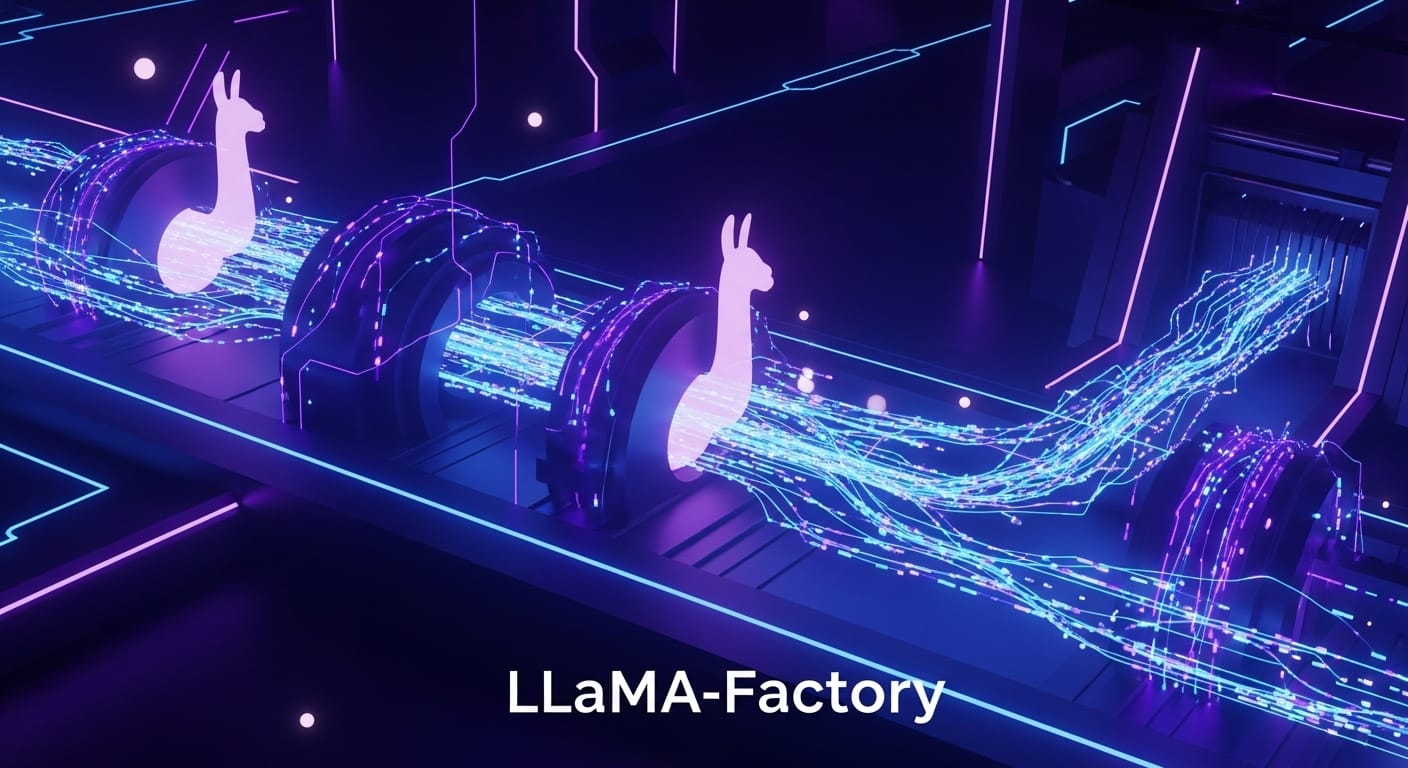Key Takeaways
- Hugging Face Transformers is an open-source Python library that simplifies working with state-of-the-art machine learning models for natural language processing (NLP), computer vision, and audio tasks.
- It provides access to thousands of pre-trained models, allowing developers to implement complex AI functionalities with minimal code.
- The library features a user-friendly
pipelineAPI for rapid prototyping and a modular design for advanced customization and fine-tuning. - Installation is straightforward using
pip, with strong recommendations for using virtual environments. - Transformers supports major deep learning frameworks like PyTorch, TensorFlow, and JAX.
Introduction: Empowering AI Development with Hugging Face Transformers
In the rapidly evolving landscape of artificial intelligence, accessing and deploying sophisticated machine learning models can often be a daunting task. Training large models from scratch demands significant computational resources and expertise. This is where the Hugging Face Transformers library steps in as a game-changer. We’ve found it to be an indispensable tool for democratizing advanced AI, making state-of-the-art models accessible to developers, researchers, and businesses alike.
Hugging Face Transformers is an open-source Python library that provides thousands of pre-trained models to perform tasks on texts, images, and audio. It acts as a unified framework, offering a simple API to load, train, and save various Transformer models, which are the backbone of many modern AI solutions. Whether you’re working on natural language processing (NLP), computer vision, or audio applications, this library significantly abstracts away the complexity, allowing us to focus on innovation rather than boilerplate code.
Key Features
The Hugging Face Transformers library boasts a rich set of features that make it a powerhouse for AI development:
- Vast Model Hub: We gain access to over a million pre-trained model checkpoints on the Hugging Face Hub, encompassing architectures like BERT, GPT-2, T5, RoBERTa, and many more. These models are ready for tasks such as text classification, translation, summarization, and text generation.
- Simplified API (Pipeline): The intuitive
pipelineAPI allows us to perform common tasks with just a few lines of code, handling tokenization, model inference, and output formatting automatically. This is perfect for rapid prototyping and getting quick results. - Framework Agnostic: Transformers supports interoperability across major deep learning frameworks, including PyTorch, TensorFlow, and JAX, offering flexibility in our development environment.
- Modular Design: The library’s modular structure enables both out-of-the-box usage and deep customization, allowing us to fine-tune models on custom datasets for specific domain-specific tasks.
- Multi-modal Capabilities: While initially strong in NLP, Transformers has expanded to support computer vision, audio, and multi-modal tasks, providing a comprehensive solution for diverse AI projects.
- Community-Driven Ecosystem: The library integrates tightly with other Hugging Face tools like Datasets (for efficient data loading) and Accelerate (for distributed training), fostering a collaborative environment where models and datasets are readily shared.
How to Install/Set Up
Getting started with Hugging Face Transformers is straightforward. We highly recommend setting up a virtual environment to manage dependencies and avoid conflicts with other Python packages.
Prerequisites
- Python: Ensure you have Python 3.6 or later installed. Python 3.9+ is recommended for optimal compatibility.
- pip: Make sure pip, Python’s package installer, is up to date.
Step-by-Step Installation
1. Create and Activate a Virtual Environment
Open your terminal or command prompt and run the following commands:
python -m venv transformers-env
source transformers-env/bin/activate # On Windows, use `transformers-env\Scripts\activate`2. Install Hugging Face Transformers
Once your virtual environment is active, you can install the library. We can install it with CPU support, or specify a deep learning framework like PyTorch for GPU acceleration.
For CPU-only support:
pip install transformersFor CPU support with PyTorch:
pip install 'transformers[torch]'For GPU acceleration with PyTorch, you’ll need to install PyTorch separately with CUDA support before installing Transformers. Refer to the official PyTorch website for detailed instructions.
3. Verify Installation
To confirm that Transformers is installed correctly, open a Python interpreter within your activated environment and run a simple test:
python -c "from transformers import pipeline; print(pipeline('sentiment-analysis')('Hugging Face is truly amazing!'))"You should see an output similar to [{'label': 'POSITIVE', 'score': 0.9998...}], indicating a successful installation.
How to Use (Usage Examples)
The pipeline API is an excellent starting point for leveraging the power of Hugging Face Transformers. It abstracts away much of the underlying complexity, allowing us to perform various tasks with minimal code.
Example 1: Sentiment Analysis
Let’s perform sentiment analysis on a piece of text. We’ll use the default sentiment analysis model provided by the library.
from transformers import pipeline
# Load the sentiment-analysis pipeline
classifier = pipeline("sentiment-analysis")
# Analyze the sentiment of a sentence
text = "We are incredibly excited about the capabilities of AI!"
result = classifier(text)
print(f"Text: '{text}'")
print(f"Sentiment: {result[0]['label']}, Score: {result[0]['score']:.4f}")
text_negative = "This technology still has many challenges to overcome."
result_negative = classifier(text_negative)
print(f"Text: '{text_negative}'")
print(f"Sentiment: {result_negative[0]['label']}, Score: {result_negative[0]['score']:.4f}")This code snippet initializes a sentiment analysis model and then uses it to classify the sentiment of two different sentences, demonstrating how quickly we can get insights.
Example 2: Text Generation
We can also use the pipeline for creative tasks like text generation. This example will generate text based on a given prompt.
from transformers import pipeline
# Load the text-generation pipeline
generator = pipeline("text-generation", model="distilgpt2")
# Generate text
prompt = "The future of AI in business will be characterized by"
generated_text = generator(prompt, max_new_tokens=50, num_return_sequences=1)
print(f"Prompt: '{prompt}'")
print(f"Generated text: {generated_text[0]['generated_text']}")This example showcases how we can tap into powerful generative models to produce coherent and contextually relevant text, a capability crucial for areas like content marketing or automated responses.
Example 3: Summarization
Summarizing long documents can be automated using the Transformers library.
from transformers import pipeline
# Load the summarization pipeline
summarizer = pipeline("summarization", model="sshleifer/distilbart-cnn-12-6")
# Text to summarize
long_text = """
Hugging Face Transformers is an open-source library that provides thousands of pre-trained models to perform tasks on texts, images, and audio. These models are built on top of state-of-the-art transformer architectures like BERT, GPT-2, and T5. The library is designed to be user-friendly, allowing developers to quickly integrate complex AI functionalities into their applications. It supports major deep learning frameworks such as PyTorch, TensorFlow, and JAX, offering flexibility and broad compatibility. The ecosystem includes a vast Model Hub where users can find, share, and deploy models, as well as libraries like Datasets for efficient data handling and Accelerate for distributed training. Its pipeline API simplifies tasks like sentiment analysis, text generation, and summarization, making advanced AI accessible to a wide audience.
"""
# Summarize the text
summary = summarizer(long_text, max_length=50, min_length=25, do_sample=False)
print(f"Original Text Length: {len(long_text.split())} words")
print(f"Summary: {summary[0]['summary_text']}")This demonstrates how easily we can condense information, which is invaluable for processing large volumes of data.

Conclusion
The Hugging Face Transformers library has undeniably revolutionized how we approach AI development, particularly in areas like natural language processing. Its comprehensive collection of pre-trained models, combined with a user-friendly API and robust framework support, empowers us to build sophisticated AI applications with remarkable efficiency. From sentiment analysis and text generation to summarization and beyond, the potential use cases are vast, driving innovation across various industries. We believe this library is crucial for anyone looking to leverage cutting-edge AI without the overhead of extensive model training.
As we continue to explore the frontiers of AI, tools like Hugging Face Transformers become increasingly vital. If your business is looking to integrate advanced AI capabilities, streamline your content creation processes, or develop innovative technology solutions, we are here to help. We provide cutting-edge AI solutions, content marketing strategies, and technology consulting to help businesses innovate and grow. For more insights into how AI is reshaping industries, consider reading our post on AI in SaaS: Reshaping the Future of Business Technology or exploring The Latest AI Innovations Transforming Digital Marketing.




Permalink
Permalink
Permalink
Permalink